PORTFOLIO
In the eighteenth century, tailoring was a trade requiring a (typically) seven year apprenticeship to a master. Tailors also made riding habits and stays for women.
Tailors did not to sempster/sempstress work, though they often did employ sempsters or sempstresses in their shops to do the less skilled work. A sempster would typically be employed to do straight, simple constructions. Shirts, petticoats, aprons, and other unstructured garments were often made either at home or by sempstresses.
Men’s Tailoring

Man's red broadcloth breeches

A man's waistcoat, of Colonial Williamsburg documented textile reprint

A blue broadcloth ditto suit with Death Head buttons

Poor man's brown canvas breeches with "self" buttons

A very decent fit in the back

The matching workman's jacket to complete the "suit." Unlike many jackets of the era, this jacket needs to be protective, and so the buttons are entirely functional.

Ditto; pleats in the back remain basted until construction and fitting are complete.

Frock coat and breeches, contrast waistcoat

Back of frock coat

Waistcoat with different breeches and Sunday shirt

Now fully dressed in frock coat and hat; addition of indispensable accessory
Women’s Tailoring
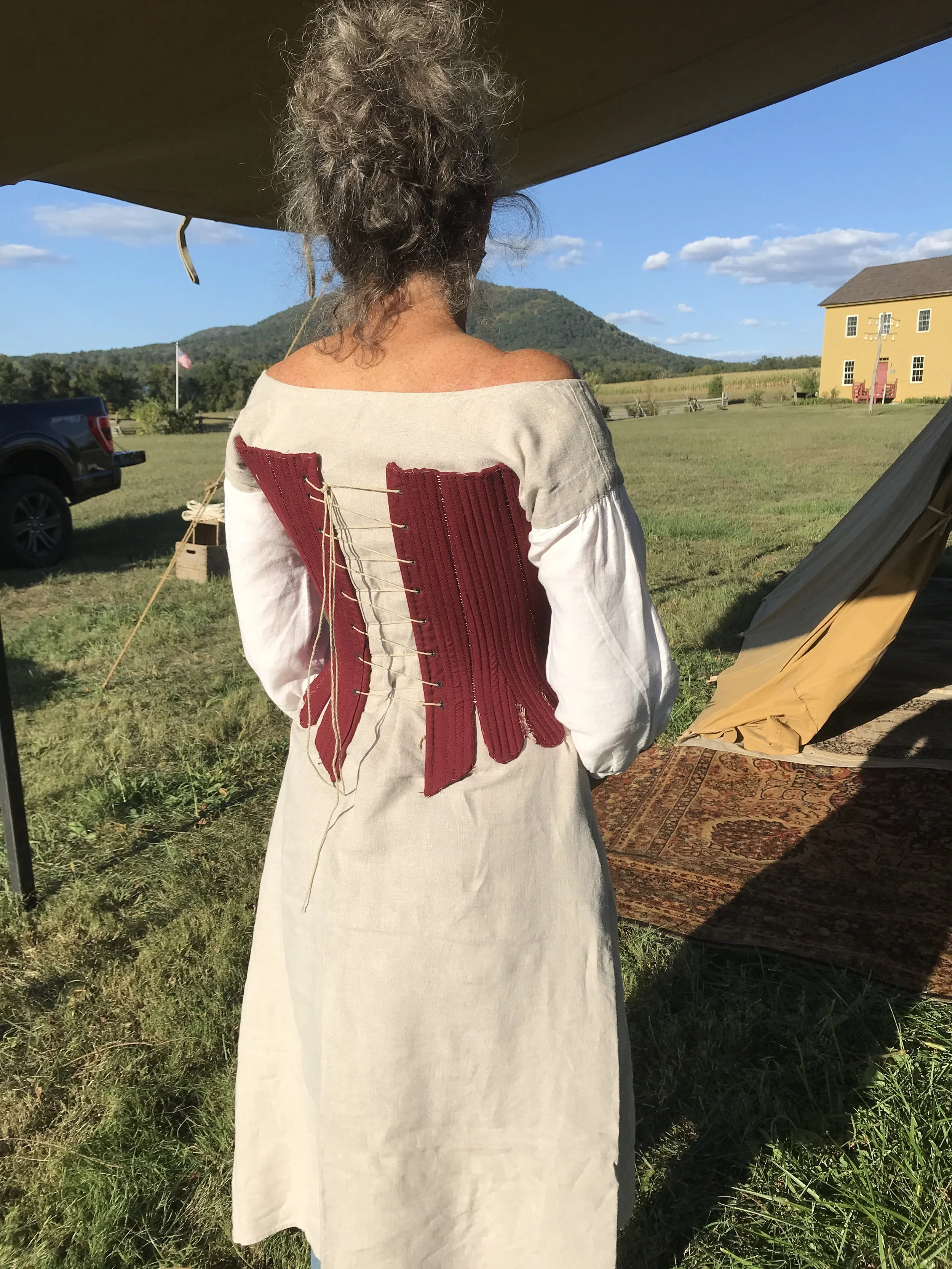
A pair of well-fitting stays.

Smoothly fit, the top line visible from the back

The stays ready for fitting

Stomacher bound with leather

Inside of the stomacher has same lining as the stays will have when complete.
Semptster/Semptstress Work
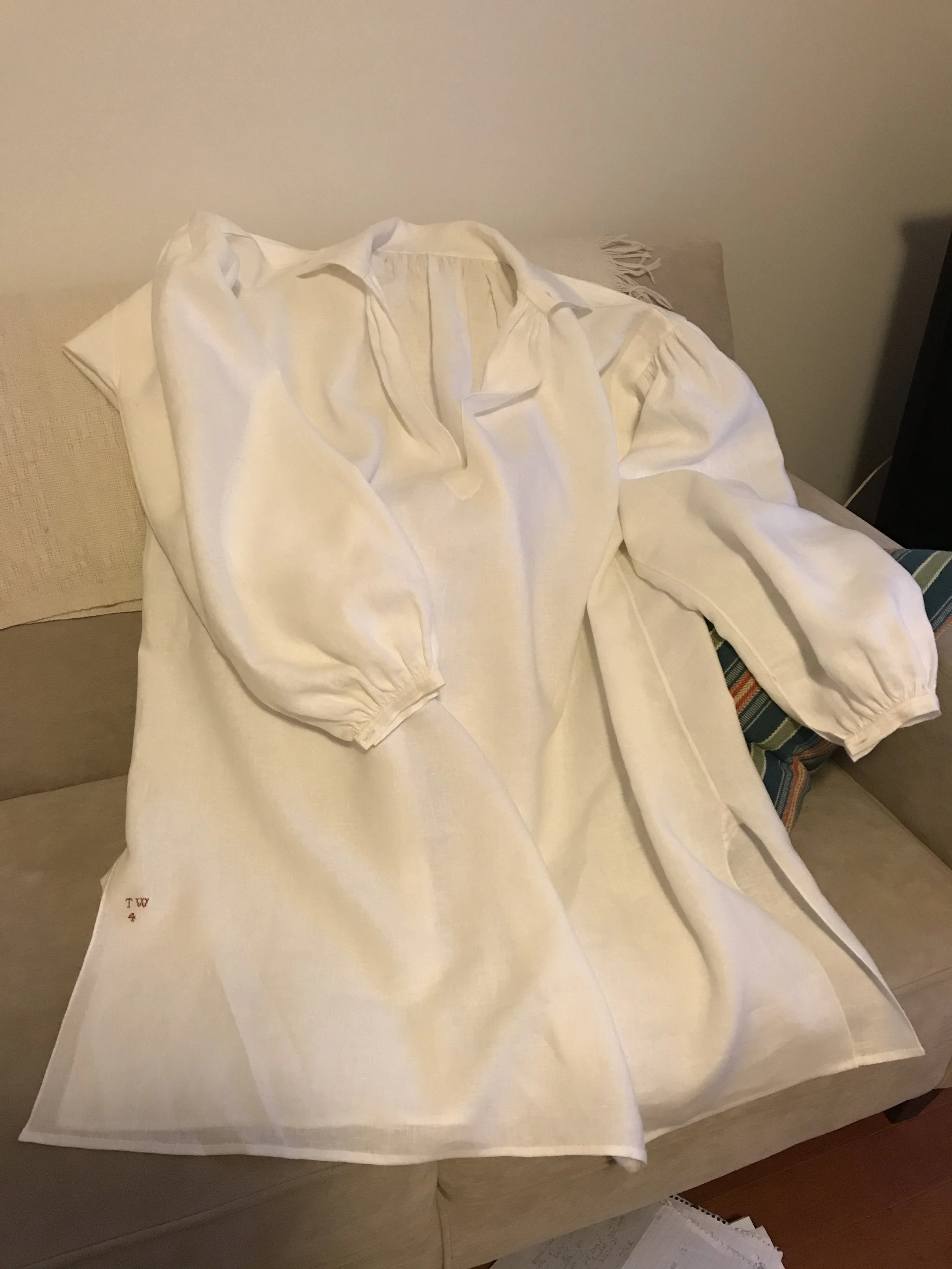
A man's shift (shirt)
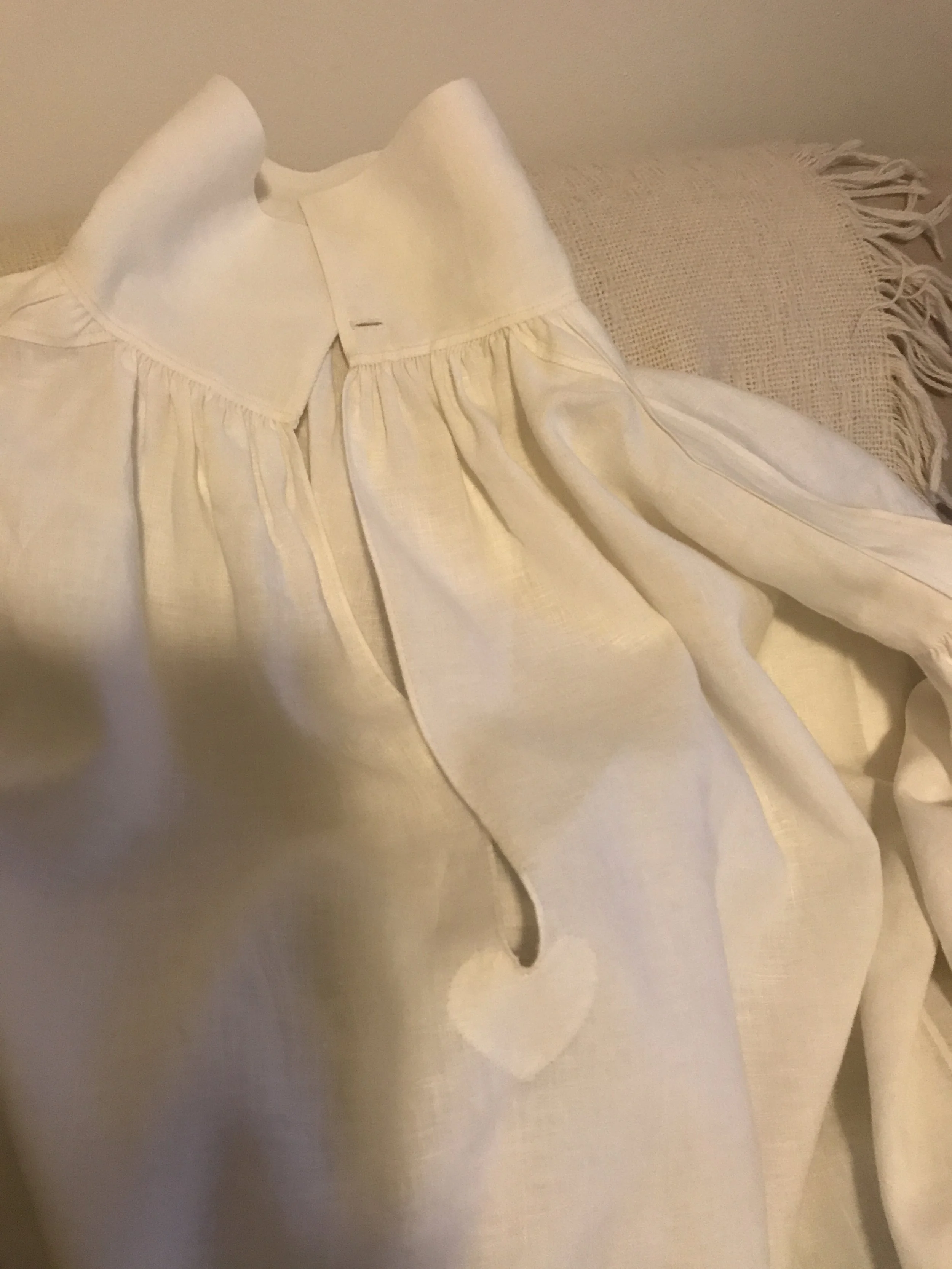
"Stitched" and stroke gathered collar; bosom heart for reinforcement
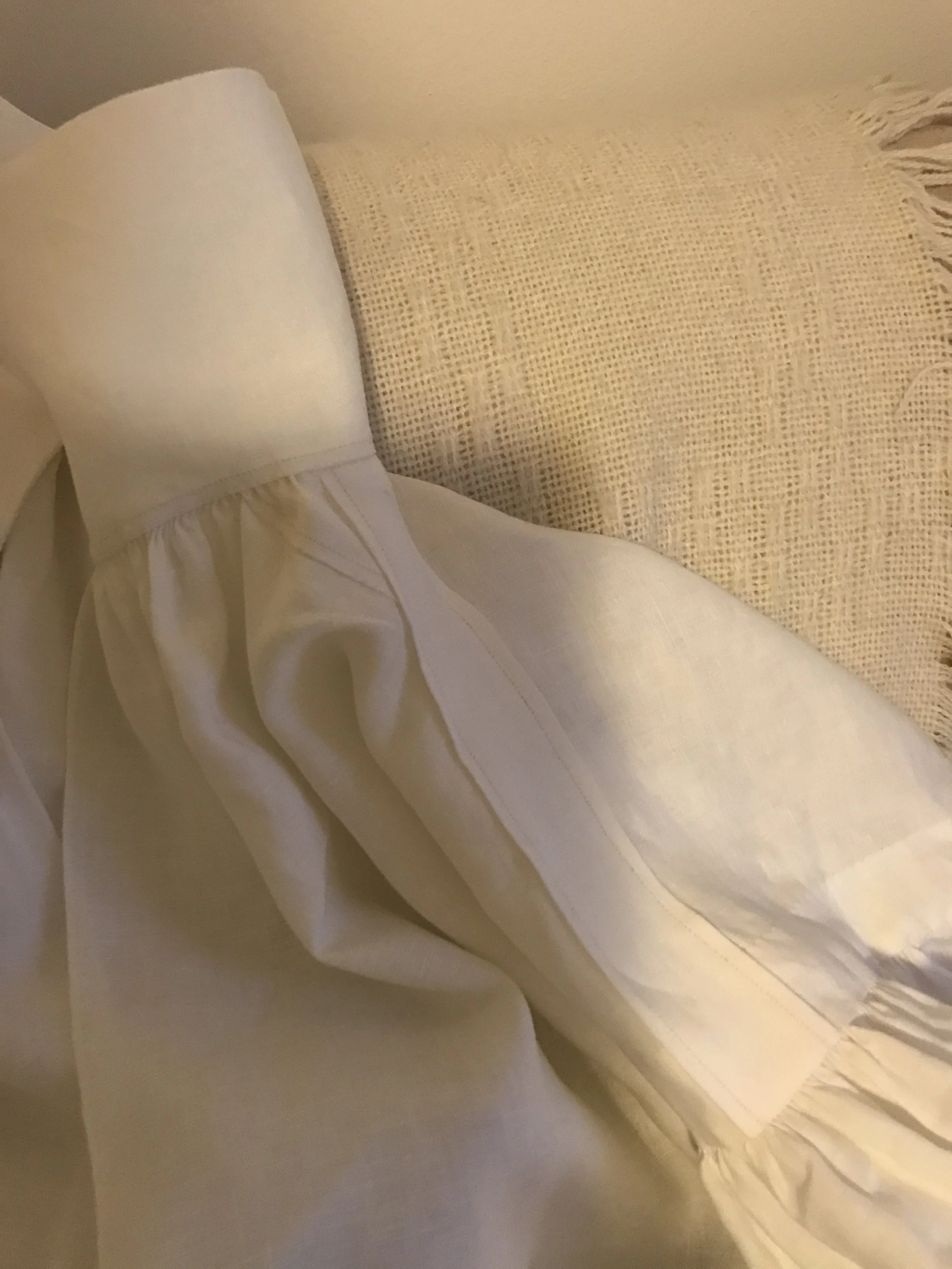
"Stitched" shoulder strap increases life of the shirt.
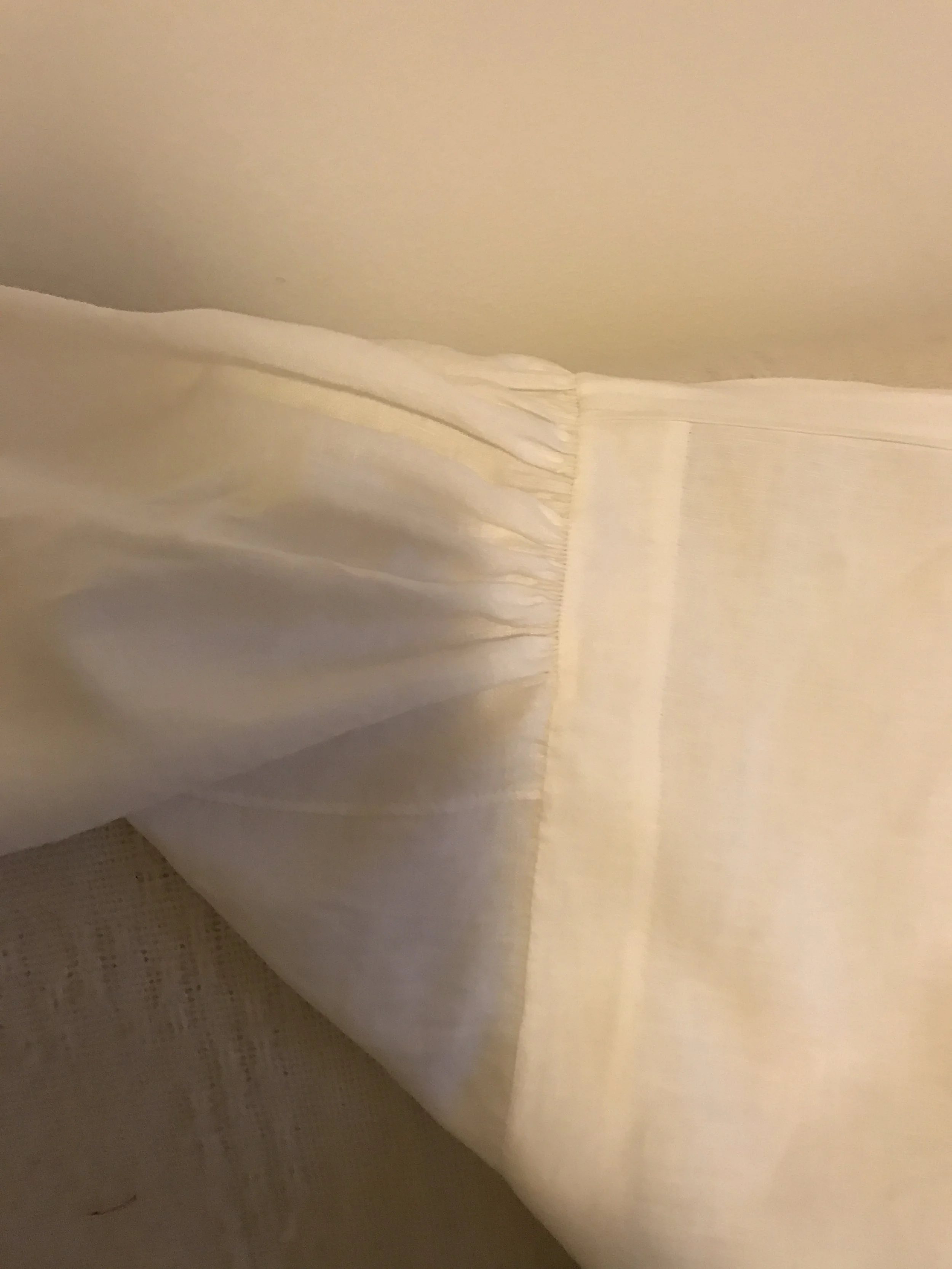
Stroke gathered sleeves
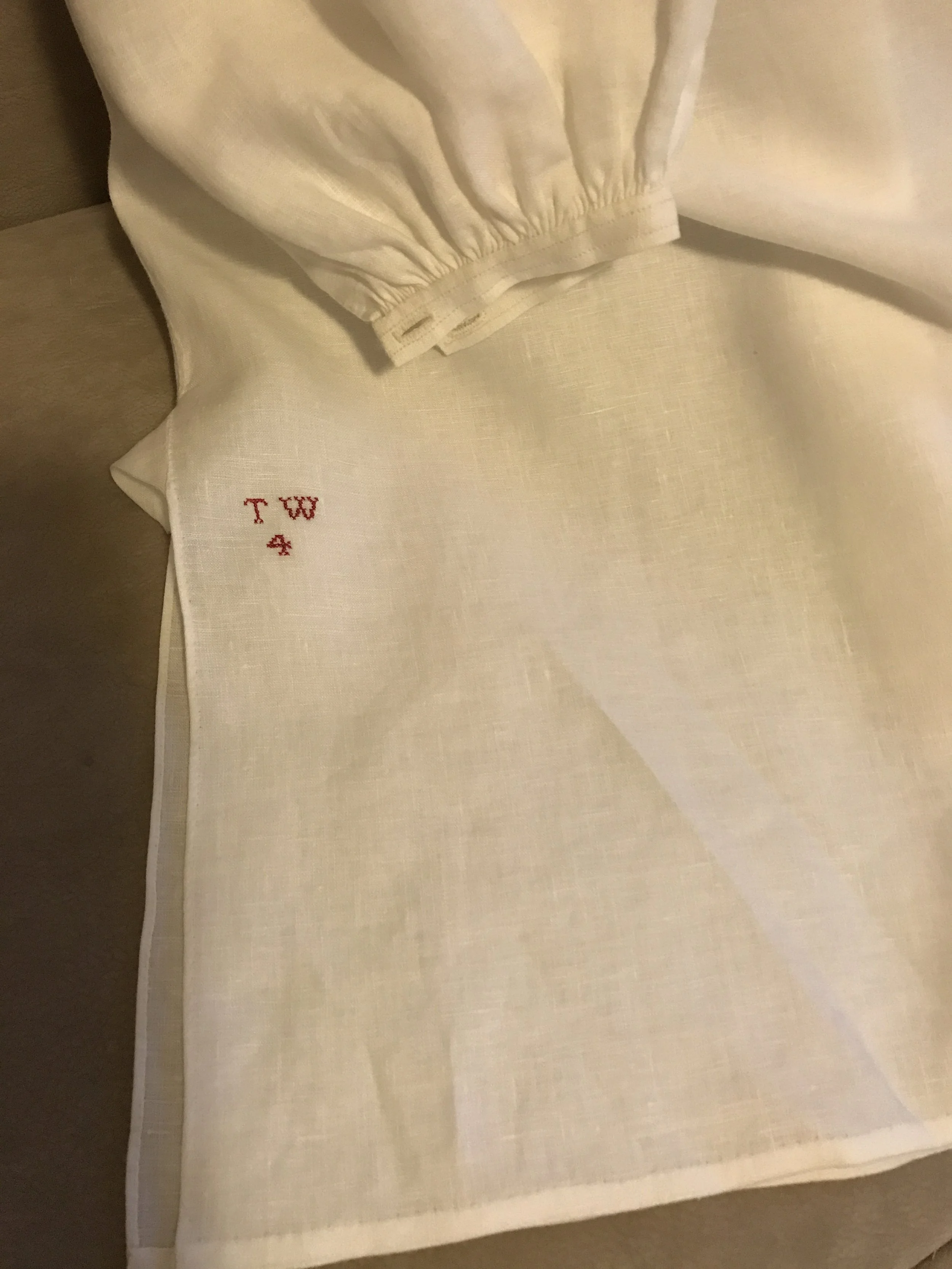
"Stitched" and stroke gathered narrow cuffs; laundry mark

Man's pleated neck stock requiring a buckle
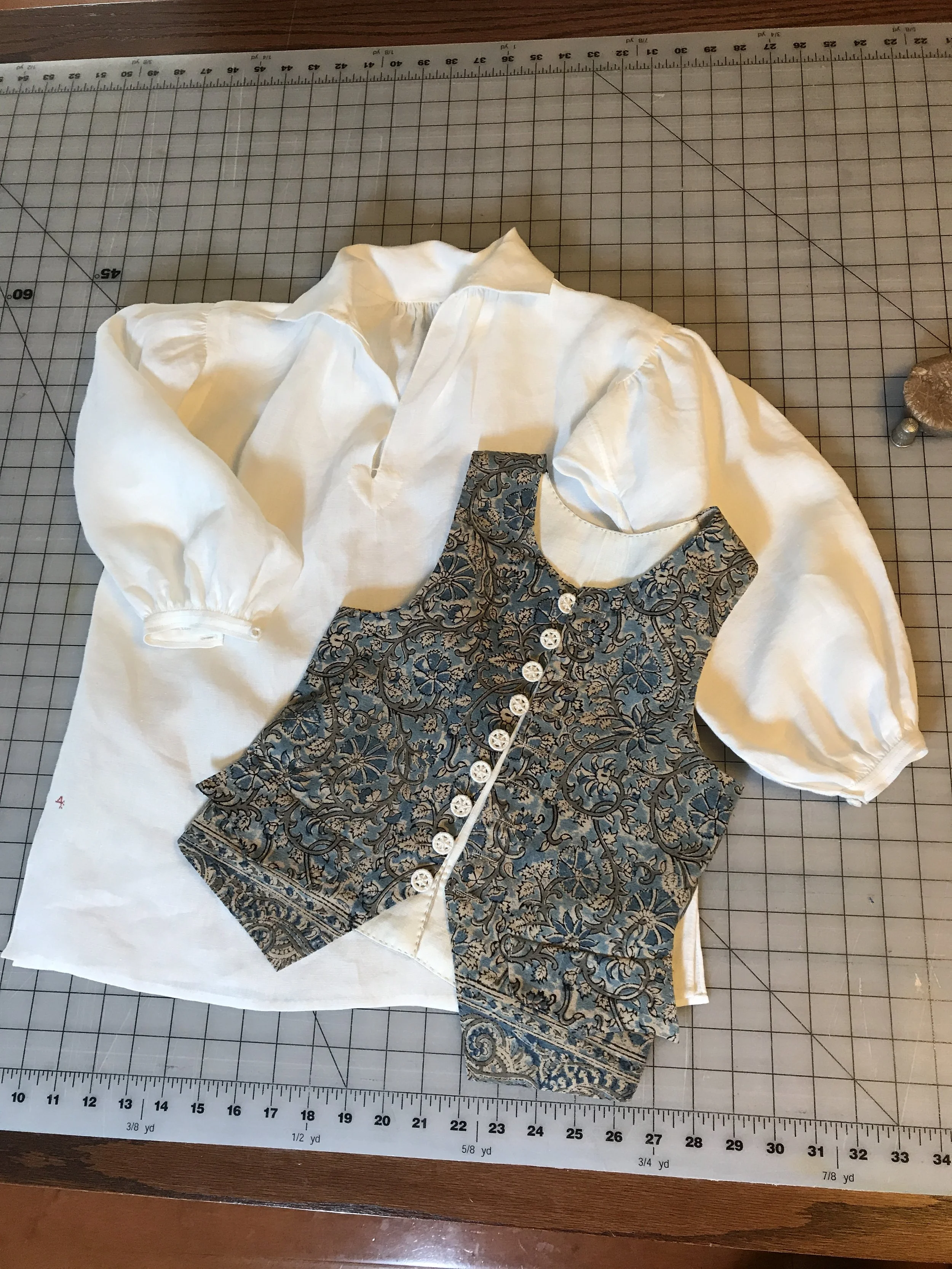
Boys' garments were fashioned in the same manner as mens', but not necessarily by a tailor.
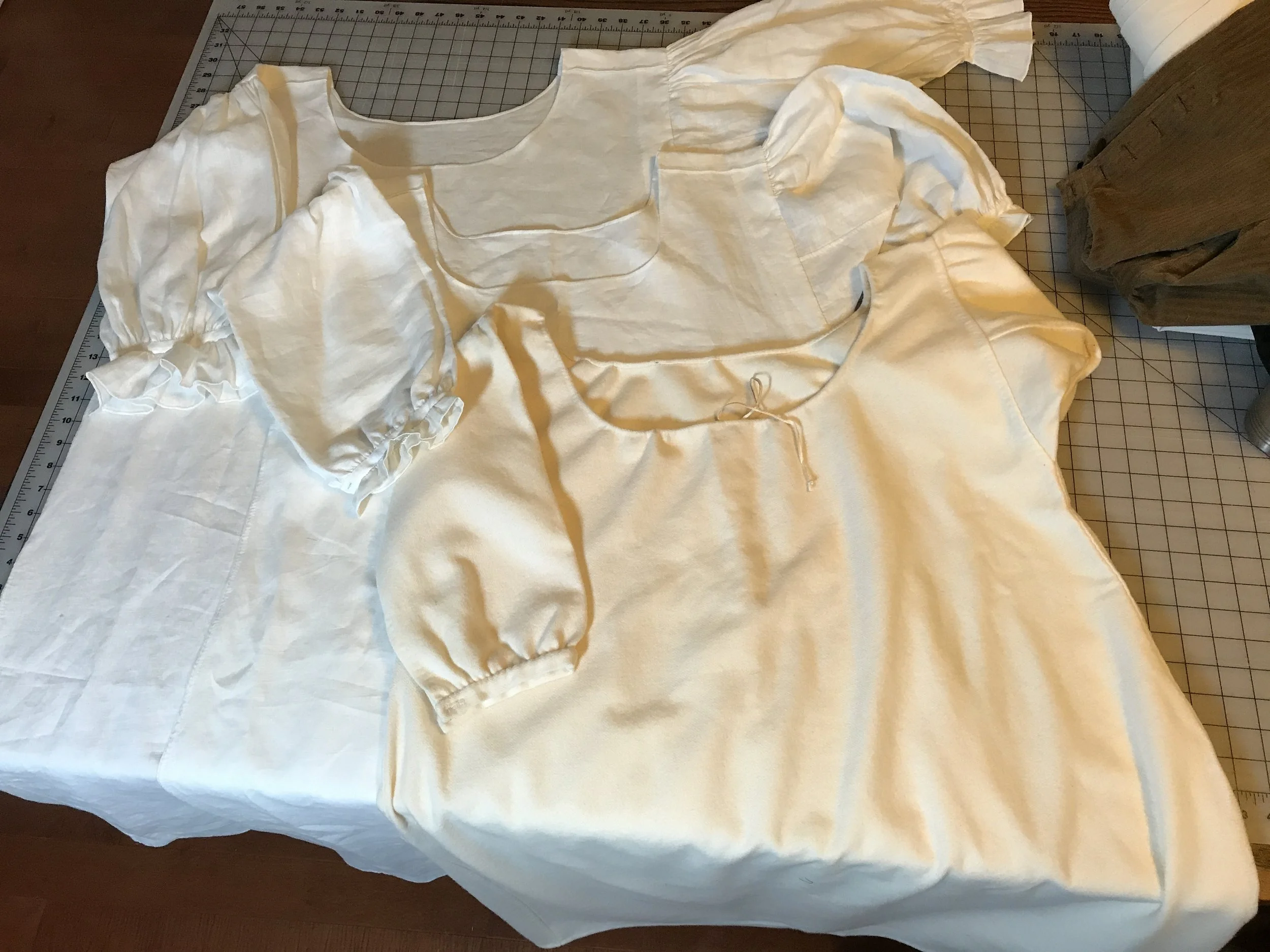
Though presumably not to be seen in a tailor's shop, women's shifts could be made by a sempstress.